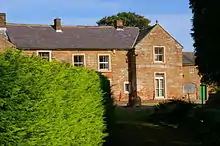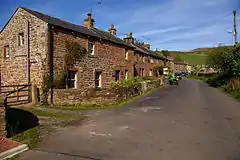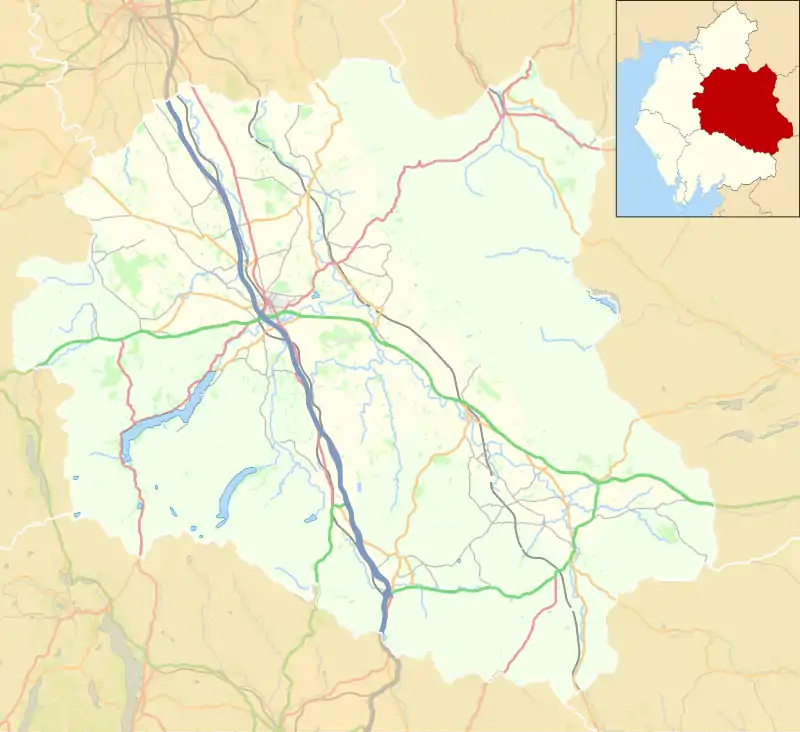Croglin
Croglin is the name of a village, beck (stream), and grange in Cumbria in England. Croglin is a quiet picturesque fellside village between the Pennines and the River Eden, about 14 miles (23 km) south-east of Carlisle. The surrounding land is used for agriculture, mainly sheep. A small river, Croglin Water, flows through the valley down into the River Eden.
A village has existed in this location for a long time and may originally have been two separate hamlets. There has been a church on the current site since the Norman period, but the present building, dedicated to St. John the Baptist, was erected in 1878 to a design by J. Hewison of Edinburgh. There is a post office, which opens two mornings a week, and a pub, the Robin Hood.
Because of its proximity to the Scottish borders, the village was often raided by the Border Reivers in the 15th century. The lower two stories of a pele tower still survive, incorporated into the house formerly known as Croglin Vicarage, now The Old Pele, a testament to that need for defence.[1]
There is a tale of a vampire associated with the area. It has many versions, and some have accurate local details, many of which are available on other sites.
A toy manufacturer, Croglin Toys, was set up in the village in 1980, but now operates from nearby Lazonby.[2] A small dairy in the area, Thornby Moor Dairy, founded in 1979, has developed a type of cheese made from ewe's milk, known as Croglin Cheese.[3]
Etymology
The name Croglin is[4] probably a compound of a Middle English word crōk, "bend", ultimately derived from Old Norse krókr, and Old English hlynn, "torrent".[5] Though the location of Croglin favours this explanation,[6] also possible is derivation from Brittonic crǖg, "abrupt/isolated hill"[6] and lïnn, "a pool" is also possible (c.f. Welsh crug-llyn).[6]

References
- The Old Pele, British Listed Buildings Online, retrieved 2 June 2011
- "Children give Eden firm their "most playable toys in Britain" vote", Cumberland & Westmorland Herald, 14 December 2007, retrieved 7 December 2009
- Thornby Moor Dairy, UKTV, retrieved 7 December 2009
- Ekwall, Eilert (1922). The place-names of Lancashire. Manchester: Chetham Society.
- Armstrong, A. M.; Mawer, A.; Stenton, F. M.; Dickens, B. (1950). The place-names of Cumberland. English Place-Name Society, vol.xx. Part 1. Cambridge: Cambridge University Press. p. 183.
- James, Alan. "A Guide to the Place-Name Evidence" (PDF). SPNS - The Brittonic Language in the Old North. Archived from the original (PDF) on 13 August 2017. Retrieved 25 November 2018.
External links
 Media related to Croglin at Wikimedia Commons
Media related to Croglin at Wikimedia Commons- Cumbria County History Trust: Croglin (nb: provisional research only - see Talk page)



